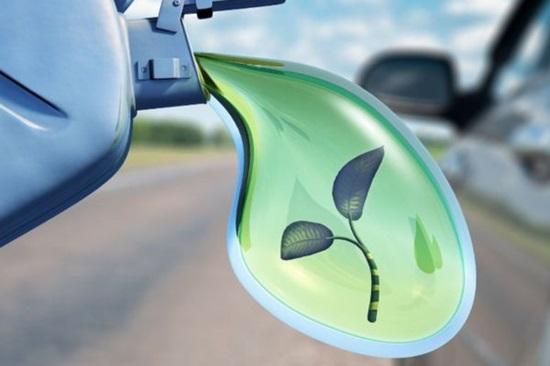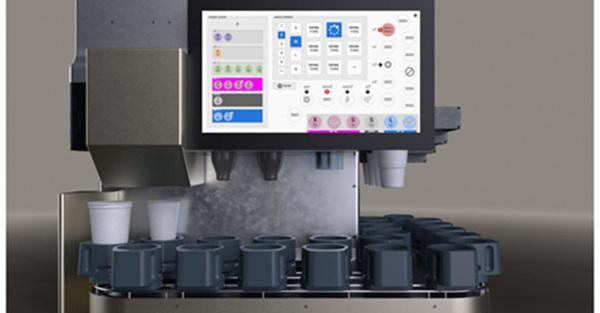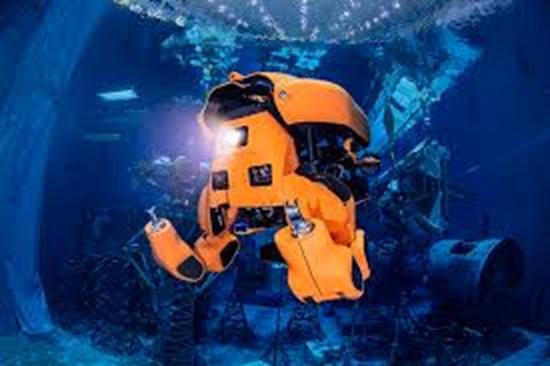Press release
The Global Deep Sea Robot Market is expected to reach USD 5.1 billion by 2030.
According to the report published by Virtue Market Research The Global Deep Sea Robot Market was valued at USD 2.8 billion in 2024 and will grow at a CAGR of 10.5% from 2025 to 2030. The market is expected to reach USD 5.1 billion by 2030.Request Sample Copy of this Report @ https://virtuemarketresearch.com/report/deep-sea-robot-market/request-sample
The deep sea robot market has been gaining attention because of its role in exploring and managing environments far beneath the ocean surface. One of the strongest long-term drivers behind this market is the growing demand for underwater exploration and resource discovery. Countries and companies around the world are looking at the ocean floor for resources like rare minerals, new energy possibilities, and even scientific knowledge about ecosystems. Deep sea robots are becoming the main tools for these activities because they can handle the extreme pressure and harsh conditions that human divers cannot. This demand is expected to continue for many years, shaping how the industry grows and develops.
The COVID-19 pandemic brought a very mixed effect to the market. On one side, it caused delays in manufacturing, supply chains, and deployment of robots in ocean-based projects due to restrictions on travel and shipping. Many large-scale underwater exploration projects were put on hold. On the other hand, the pandemic also highlighted the importance of remote-operated technologies. With less human presence allowed at sea, organizations turned toward robots to continue research, inspections, and data collection without putting people at risk. This situation has reinforced the value of automation in deep sea industries and pushed more investments toward unmanned underwater systems.
In the short term, one of the strongest drivers is the rapid need for underwater inspections in industries like oil and gas, shipping, and offshore wind energy. These robots can conduct detailed checks on pipelines, underwater cables, and structures without stopping operations for long periods. The time and cost savings are significant, so companies are adopting deep sea robots to boost efficiency. This need for quick and accurate inspections is pushing market demand forward in the near future.
Looking at opportunities, one area that stands out is the role of deep sea robots in climate and environmental research. Scientists and governments are under pressure to understand how oceans affect global warming, biodiversity, and weather patterns. Robots can collect samples, measure temperature, and monitor coral reefs at depths that were once unreachable. This creates opportunities for partnerships between technology firms, research institutions, and governments. The demand for more data on ocean health is creating a new market space where these robots can serve purposes beyond industrial use.
A clear trend that is being seen in the deep sea robot industry is the integration of artificial intelligence and advanced sensors. Traditional robots used to follow manual control systems, but new models are now being designed to analyze data on the spot, avoid obstacles, and even make decisions under water. This trend is creating smarter and more efficient systems that reduce the need for constant human monitoring. As technology continues to improve, robots are expected to act more independently, which will open possibilities for longer missions and deeper exploration.
Segmentation Analysis:
By Type: Remotely Operated Vehicles, Autonomous Underwater Vehicles, Hybrid Underwater Robots, Others
The deep sea robot market by type is witnessing dynamic progress due to expanding applications across industrial and research fields. Remotely Operated Vehicles (ROVs) stand out as the largest subsegment in this category. Their dominance comes from widespread use in oil and gas inspections, defense activities, and underwater construction, where reliability and operator control remain essential. ROVs are valued for their ability to transmit live visuals, manipulate equipment, and perform precision tasks in extremely challenging environments.
On the other hand, Autonomous Underwater Vehicles (AUVs) are projected to be the fastest growing subsegment during the forecast period. Their ability to navigate independently with advanced sensors, combined with rising demand for longer missions without human intervention, is fueling adoption in marine research and environmental monitoring. Hybrid underwater robots, blending features of both ROVs and AUVs, are also gaining attention but remain in early adoption phases. Other niche categories, though smaller, add to specialized uses such as underwater archaeology. With rising global exploration needs, these segments together reflect the evolving role of advanced robotics under the sea, creating varied opportunities across industries while reshaping how underwater activities are carried out.
By Application: Oil & Gas Exploration, Defense & Security, Marine Research, Underwater Archaeology, Environmental Monitoring, Others
The deep sea robot market by application shows a wide spectrum of demand driven by industry-specific needs. Oil and Gas Exploration emerges as the largest subsegment in this category due to the extensive use of deep sea robots in inspecting pipelines, rigs, subsea structures, and carrying out repair operations. Energy companies rely heavily on these robots to ensure safety, reduce downtime, and minimize human risk in offshore projects. Defense and Security, however, is expected to be the fastest growing subsegment during the forecast period. Rising geopolitical tensions, along with growing investments in naval strength, are pushing the adoption of deep sea robots for surveillance, mine detection, and underwater intelligence missions. Marine Research continues to expand steadily as institutions prioritize oceanographic data collection.
Underwater Archaeology is carving a niche role by supporting the discovery of shipwrecks and submerged heritage sites. Environmental Monitoring is also gaining relevance as global attention shifts toward studying climate change impacts on marine ecosystems. Other applications include customized tasks in commercial and scientific areas. Each subsegment highlights how deep sea robots serve multiple critical functions, with demand patterns influenced by economic, security, and environmental factors on a global scale.
Read More @https://virtuemarketresearch.com/report/deep-sea-robot-market
Regional Analysis:
The deep sea robot market by region highlights strong differences in adoption across geographies. North America stands as the largest regional market, backed by significant investments in offshore oil and gas projects, high military spending, and the presence of leading technology developers. The region's mature infrastructure and continuous innovation have cemented its leadership in deploying advanced deep sea robotic systems.
In contrast, Asia-Pacific is projected to be the fastest growing regional segment during the forecast period. The growth is fueled by increasing exploration activities in countries like China, Japan, and India, where rising energy demand and marine research programs are driving heavy adoption. Europe maintains strong momentum due to its focus on environmental monitoring and underwater archaeology, supported by collaborative research initiatives. South America is gradually expanding as offshore oil fields in Brazil and surrounding waters rely more on robotic solutions for operations. The Middle East & Africa region is also seeing growing interest, particularly in offshore energy development and defense needs. Each region demonstrates unique demand drivers, shaping market opportunities in distinct ways while ensuring that deep sea robotics continue to advance across both industrial and scientific fronts worldwide.
Latest Industry Developments:
• Trend of forming Strategic Collaborations and Acquisitions to Expand Capabilities: To gain larger portions of the deep sea robot market, companies increasingly team up with others or acquire smaller firms that offer niche tech. These strategic partnerships let them combine strengths - for example, merging advanced sensor technology, navigation systems, or autonomy software. By doing this, firms can reduce time to market for innovations and broaden their product offerings more cheaply than building everything in-house. Recent activity shows mergers that bring together ROV capabilities with autonomy, or sonar and imaging startups with established robotics manufacturers. This trend helps companies cover more applications, improve quality, and enter new geographies faster, strengthening their share in a competitive market.
• Trend of Investing in Advanced Autonomy, AI and Sensor Integration: Another strategy is heavy investment in autonomy, artificial intelligence, and enhanced sensor systems. Rather than just being remote-controlled, deep sea robots are being made to navigate complex terrains, avoid obstacles, and gather more accurate environmental or structural data with minimal human oversight. Machine learning and AI-based path planning are being embedded so robots can make decisions under water. Also, sensor suites (imaging, sonar, optical, chemical sensors) are getting better in resolution, durability, and energy usage. This not only improves performance but also lowers operational costs over time, helping firms offering more capable robots win contracts for exploration, defense, and environmental monitoring.
• Trend of Offering Turn-Key and Modular Solutions to Improve Client Adoption: Companies are offering more modular and turn-key deep sea robot systems to attract clients who want faster deployment and lower customization burden. Modular designs allow parts (camera, propulsion, power, manipulators) to be swapped or upgraded without redesigning entire systems. Turn-key solutions mean customers get a package including robot, software, deployment support, and maintenance. This reduces risk and cost for buyers, opening up adoption by smaller research institutions, defense units, or offshore energy operators. Such offerings make it easier to scale usage, spread support networks, and improve customer satisfaction, helping those companies offering these options to grow their market share more rapidly.
customize the Full Report Based on Your Requirements @https://virtuemarketresearch.com/report/deep-sea-robot-market/customization
CONTACT US :
Virtue Market Research
Kumar Plaza, #103, SRPF Rd, Ramtekadi, Pune, Maharashtra 411013, India
E-mail: megha@virtuemarketresearch.com
Phone: +1-917 436 1025
ABOUT US :
"Virtue Market Research stands at the forefront of strategic analysis, empowering businesses to navigate complex market landscapes with precision and confidence. Specializing in both syndicated and bespoke consulting services, we offer in-depth insights into the ever-evolving interplay between global demand and supply dynamics. Leveraging our expertise, businesses can identify emerging opportunities, discern critical trends, and make decisions that pave the way for future success."
This release was published on openPR.
Permanent link to this press release:
Copy
Please set a link in the press area of your homepage to this press release on openPR. openPR disclaims liability for any content contained in this release.
You can edit or delete your press release The Global Deep Sea Robot Market is expected to reach USD 5.1 billion by 2030. here
News-ID: 4224181 • Views: …
More Releases from Virtue Market Research

The Global Bioethanol for Automotive Market is projected to reach a market size …
According to the report published by Virtue Market Research The Global Bioethanol for Automotive Market was valued at USD 25.28 Billion and is projected to reach a market size of USD 45.03 Billion by the end of 2030. Over the forecast period of 2025-2030, the market is projected to grow at a CAGR of 10.1%.
Request Sample Copy of this Report @https://virtuemarketresearch.com/report/bioethanol-for-automotive-market/request-sample
The bioethanol for automotive market has been steadily gaining attention…

Global Automated Beverage Dispenser Market is projected to reach the value of $8 …
According to the report published by Virtue Market Research In 2024, the Global Automated Beverage Dispenser Market was valued at $6.36 Billion, and is projected to reach a market size of $8.35 Billion by 2030. Over the forecast period of 2025-2030, market is projected to grow at a CAGR of 5.6 %.
Request Sample Copy of this Report @ https://virtuemarketresearch.com/report/global-automated-beverage-dispenser-market
The Global Automated Beverage Dispenser Market is witnessing significant growth, driven…

Global Serological Test for Influenza Disease Diagnostics Market is projected to …
According to the report published by Virtue Market Research In 2024, the Global Serological Test for Influenza Disease Market was valued at $0.8 Billion, and is projected to reach a market size of $1.41 Billion by 2030. Over the forecast period of 2025-2030, market is projected to grow at a CAGR of 7.3%.
Request Sample Copy of this Report @https://virtuemarketresearch.com/report/serological-test-for-influenza-disease-diagnostics-market/request-sample
The global serological test for influenza disease market has seen…

Global Prostate Cancer Testing Kits Market is projected to reach the value of $7 …
According to the report published by Virtue Market Research In 2024, the Global Prostate Cancer Testing Kits Market was valued at $3.21 Billion, and is projected to reach a market size of $7.74 Billion by 2030. Over the forecast period of 2025-2030, market is projected to grow at a CAGR of 13.4%.
Request Sample Copy of this Report @https://virtuemarketresearch.com/report/prostate-cancer-testing-kits-market/request-sample
In the realm of healthcare, the Global Prostate Cancer Testing Kits…
More Releases for Robot
Major Market Shift in Robot Kitchen Industry: Robot-Operated Or AI-Powered Resta …
What Is the Forecasted Market Size and Growth Rate for the Robot Kitchen Market?
The robot kitchen market has grown strongly in recent years. It is projected to grow from $3.35 billion in 2024 to $3.66 billion in 2025, at a CAGR of 9.3%. The growth is driven by automation and efficiency, rising labor costs, consumer demand for convenience, innovation and competition, and the emphasis on food safety and hygiene.
The robot…
AI Robot Toy Market Likely to Enjoy Massive Growth (2024-2029)ROYBI AI Robot , D …
According to HTF Market Intelligence, the Global AI Robot Toy market to witness a CAGR of 17.8% during the forecast period (2024-2029). The Latest Released AI Robot Toy Market Research assesses the future growth potential of the AI Robot Toy market and provides information and useful statistics on market structure and size.
This report aims to provide market intelligence and strategic insights to help decision-makers make sound investment decisions and identify…
Six-Axis Robot Controllers Market | ABB, Alfa Robot, Arburg, Engel
The global six-axis robot controllers market report is a comprehensive report that provides a detailed analysis of the current status and future trends of the six-axis robot controllers market worldwide. This report provides valuable information to industry stakeholders by offering an in-depth perspective on market dynamics, competitive landscape, growth opportunities, and key challenges faced by industry participants.
From the perspective of market dynamics, this report explores the factors driving the growth…
Four-Axis Robot Controllers Market | ABB, Alfa Robot, Arburg, Engel
The global four-axis robot controllers market report is a comprehensive report that provides a detailed analysis of the current status and future trends of the four-axis robot controllers market worldwide. This report provides valuable information to industry stakeholders by offering an in-depth perspective on market dynamics, competitive landscape, growth opportunities, and key challenges faced by industry participants.
From the perspective of market dynamics, this report explores the factors driving the growth…
TPA Robot launches a new industrial linear robot
The single axis robot KK Series, developed by TPA ROBOT, uses partially hardened U-shaped steel base track to significantly increase the robot's strength and load capacity. Due to the different environments, we have three type of linear robot series, KSR, KNR and KFR, depending on the type of cover used.
For the return system between the track and the slider, the contact surface between the ball and the ball groove adopts…
Robot Battery Market 2023- 2028 Global Insights by Industry Volume, Opportunitie …
The Robot Battery Market research report gives consistent conveyance of the substance. Information gathered in the notification is from verified and reliable sources. Besides, the report additionally breaks down the forthcoming patterns and openings likely to propel the Robot Battery Market. Moreover, the Robot Battery Market provides creative strategies and plans that help market players to stay ahead of the competition. Besides, the Robot Battery Market research report likewise evaluates…
